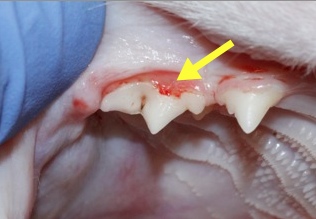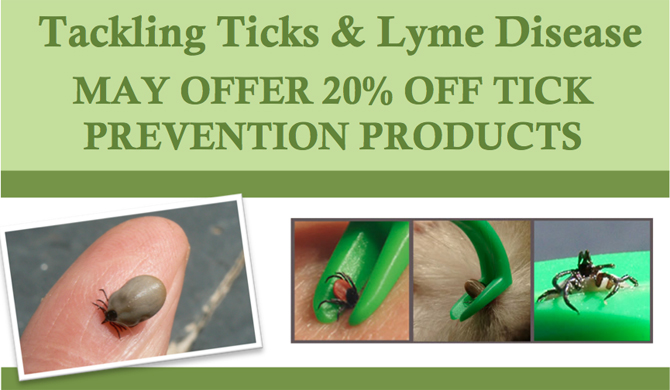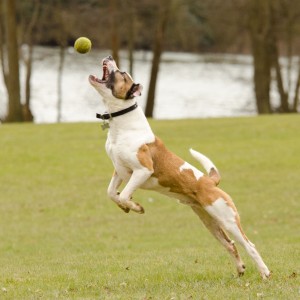News
Archive for May, 2013
Special Offer – Microchip Month June
by on May 31st, 2013
Category: Special Offers, Tags:
Pet of the Month – June 2013
by on May 31st, 2013
Category: Pet of the Month, Tags:
 Dudley has been a real star. When he was first brought in to our clinic he was dribbling and having difficulty in eating. It soon became apparent that he was suffering from Feline Odontoplastic Resorptive Lesions often shortened to ‘Tooth Resorption’. He has made a swift recovery from the trauma of the multiple tooth extractions which were necessary to relieve his pain. This condition represents one of the most common diseases seen in domestic cats and occurs in 20-75% of cats depending on the population studied.
Dudley has been a real star. When he was first brought in to our clinic he was dribbling and having difficulty in eating. It soon became apparent that he was suffering from Feline Odontoplastic Resorptive Lesions often shortened to ‘Tooth Resorption’. He has made a swift recovery from the trauma of the multiple tooth extractions which were necessary to relieve his pain. This condition represents one of the most common diseases seen in domestic cats and occurs in 20-75% of cats depending on the population studied.
Older and purebred cats are more likely to be affected and the numbers of teeth that can be affected increases with age. This unusual condition was probably first identified properly in the 1920’s although the problem has now been demonstrated in the teeth of cats dating back to the 13th and 14th centuries!! Also the domestic cat’s larger relatives haven’t escaped this one as similar lesions have been identified in wild cats including Lions and Tigers.
Despite this being a common condition, the cause of tooth resorption is still not known. Recent studies have suggested that Vitamin D metabolism may be important but as yet there is no known way of preventing the condition from developing.
What Are The Signs of Tooth Resorption in Cats?
Initially cats with affected teeth may not show any symptoms at all. However once a significant amount of erosion of the tooth develops and is visible, the condition will usually then result in pain. As the disease progresses the symptoms your cat may show include difficulty in eating, dribbling saliva, face rubbing, jaw chattering and weight loss.
How is Tooth Resorption Diagnosed?
Tooth resorption is usually diagnosed by your vet during a dental check up often as part of the full clinical examination that will be carried out before a booster vaccination or if your cat is not well. They can also be detected if your vet has the opportunity to examine your cat’s teeth under a general anaesthetic. Not all cases of tooth resorption are obvious. Sometimes they can be hidden beneath the gum line and dental x-rays are required to detect them. See picture enclosed.
How is Tooth Resorption Treated?
The treatment for all teeth with tooth resorption is extraction as they are likely to cause pain as the disease progresses and there is no medical treatment to cure this problem. The extraction of teeth in cats is usually a surgical procedure. The teeth can be fragile and tricky to remove. Fortunately, most patients recover rapidly after tooth extraction and will often be much happier once these painful teeth have been extracted.
My dog has a heart murmur – what does it mean?
by on May 31st, 2013
Category: News, Tags:
Whenever the word ‘heart’ is mentioned we always fear the worst. Heart murmurs are a relatively common problem in dogs and in this article, we explain what a heart murmur is and clarify that not all murmurs in dogs are a sign of a more serious problem.
What is a heart murmur?
A heart murmur is a specific sound detected when listening to the heart with a stethoscope. This sound is a result of the blood flowing faster than normal within the heart itself or in one of the two major arteries leaving the heart (the aorta and pulmonary artery). Instead of the normal Lubb Dupp, an additional sound is present that can vary from a mild pshhh to a loud whoosh! Your vet may use a grading system from 1 to 6 to describe how loud the murmur is e.g. a grade 1 murmur is very soft and a grade 6 murmur is very loud.
Heart murmurs can develop at any stage of your dog’s life. However, the significance of the heart murmur can be very different depending on the age at which the murmur is first detected.
It often comes as a surprise to owners to be told that their dog has a heart murmur. Many dogs with heart murmurs seem normal to their owners and have no obvious symptoms of heart disease. However, it is important to remember that the presence of a heart murmur is just an indication that there may be underlying heart disease. In itself the heart murmur is not a diagnosis. This is why further investigations such as x-rays, ECG or an ultrasound scan of the heart (also referred to as an echocardiogram or ‘echo’) may be required.
If your dog has had a heart murmur detected but is not showing symptoms of heart disease, it is possible that the heart disease may not yet have developed significantly enough to affect the normal functioning of the heart. However, this situation can change and cardiac symptoms can develop rapidly. By gaining as much information as possible about your dog’s heart, you and your veterinary surgeon will be in the best position to recognise early symptoms of heart disease should they occur. This is very important as it means that appropriate treatment to assist heart function can be started promptly if and when it is required.
What is the best way to investigate a heart murmur?
The best way to investigate the cause of the heart murmur is with an ultrasound (an echocardiogram) examination of the heart. We will then be able to give you all the necessary information about the health of your dog’s heart and to advise you on what treatment, if any, is necessary.
Special Offer May 2013 – Tackling Ticks & Lyme Disease
by on May 3rd, 2013
Category: Special Offers, Tags:
Protect Your Pet From Potential Killers in the Home!
by on May 3rd, 2013
Category: News, Tags:
 PET LIFESAVERS is a completely free series of online presentations from The Veterinary Expert: Register at www.petlifesavers.com It is all about giving you the knowledge you need to protect your pet from hidden dangers in the home and to help you recognise and deal with emergency situations.
PET LIFESAVERS is a completely free series of online presentations from The Veterinary Expert: Register at www.petlifesavers.com It is all about giving you the knowledge you need to protect your pet from hidden dangers in the home and to help you recognise and deal with emergency situations.
What would you do if you came home to find your cute dachshund tucking into those lovely Belgian chocolates a friend gave you as a gift? Would you shout and stomp around? Would you see if you could salvage a few for later? Maybe you would say ‘oh well’ and let him finish them off? Would you recognise a potential emergency situation and call your vet?
Watch the PET LIFESAVERS webinars and discover:
- What to do if your cat or dog has a fit
- How to tell if they have been poisoned
- Which everyday human foods can kill
- Dangers in the house
- Dangers in the garden
- How to deal with insect bites and stings
- The ABCs of emergency first aid for cats and dogs
 In the first webinar, you will learn crucial aspects of first aid for your cat or dog. Paul discusses how to treat cuts and minor wounds and tells you what to do if things are more serious! Know what you should do if you have to transport an injured pet to your vet or emergency clinic. Listen to Paul explain what to do with bites and stings and how best to deal with vomiting and diarrhoea. Please register for the webinar series now and we will email you a link to all of the recordings.
In the first webinar, you will learn crucial aspects of first aid for your cat or dog. Paul discusses how to treat cuts and minor wounds and tells you what to do if things are more serious! Know what you should do if you have to transport an injured pet to your vet or emergency clinic. Listen to Paul explain what to do with bites and stings and how best to deal with vomiting and diarrhoea. Please register for the webinar series now and we will email you a link to all of the recordings.
The second and third sessions cover dangerous foods and poisons – some of these you will know about and some you won’t so don’t miss these!
Also learn about the signs and behaviours your pet may show that indicate GENUINE EMERGENCIES – Signs that shouldn’t be ignored.
Registering for the Pet Lifesavers Programme will help you to deal with first aid and emergency situations. You will have a much clearer idea about those things that are poisonous for your cat or dog and be much better tuned in to signs and behaviours that should be making those alarm bells ring. Take advantage of this completely free programme to become a better guardian and protector of your pet – their life is in your hands!
Pet of the Month May 2013
by on May 3rd, 2013
Category: Pet of the Month, Tags:
 Eddie a delightful Staffordshire Bull Terrier absolutely loves playing with his ball. He is athletically built, carries not an ounce of excess weight and exhibits not only the speed of a greyhound but also the agility of a working collie.
Eddie a delightful Staffordshire Bull Terrier absolutely loves playing with his ball. He is athletically built, carries not an ounce of excess weight and exhibits not only the speed of a greyhound but also the agility of a working collie.
Unfortunately Eddie’s feet tend to bear the brunt of his acute decelerations and changes of direction and he has suffered numerous cuts to his pads and broken nails. We have put Eddie on supplements to try and fortify his nails against the harsh treatment that he meters out on them and hope that this measure will keep his visits to the clinic to a minimum.






